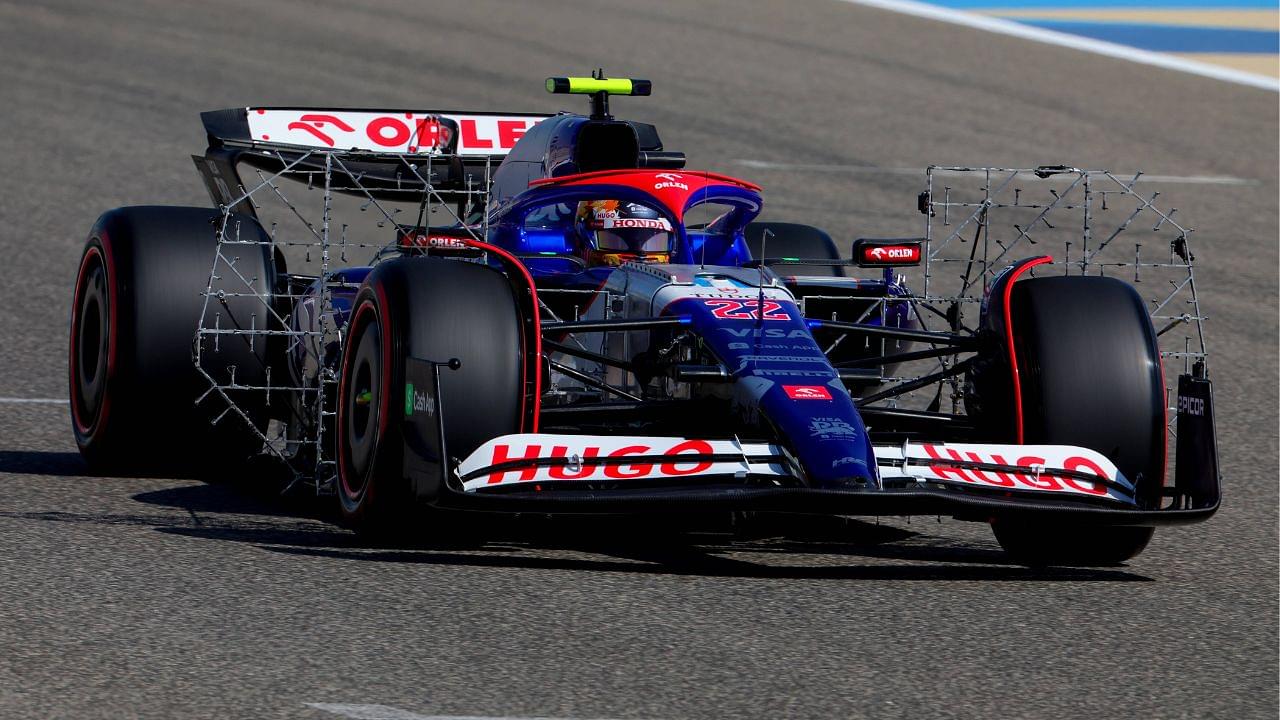As F1 is back in action with pre-season testing in Bahrain, several fans are curious to know more about the technical aspects of the aerodynamics. One such aspect is the aero rakes that F1 teams often use during pre-season testing. Every year these aero rakes catch the eyes of audiences, hanging on several teams’ cars during testing sessions. So what are these aerodynamic rakes and what do they do for teams during testing?
According to Racing News 365, aero rakes are made of alloys like titanium and consist of pitot tubes that help in measuring the pressure of airflow on F1 cars. Usually, these aero rakes appear like a fence or a spider web of metal.
Teams hang these rakes just behind the front axle or the rear axle and the diffuser. The size of these rakes can vary from 50 mm to 600 mm. The use of aero rakes helps teams to understand whether their wind tunnel simulations are correct or not.
#F1 teams are absolutely NOT messing around this morning when it comes to aero rakes
Follow along here ➡️ https://t.co/InZi6vNPuh pic.twitter.com/9Wlk5rTYVc
— The Race (@wearetherace) February 22, 2024
Despite modern-day F1 using state-of-the-art wind tunnels, and CFD (Computational fluid dynamics), aerodynamic rakes play a huge role in any F1 team’s development. While these rakes may look primitive relative to CFD and wind tunnels as development tools, their real-world application bridges the gap of errors that the other two may have.
How do F1 teams use aero rakes to understand and improve their cars?
Usually, teams opt to use aero rakes during the morning sessions in pre-season testing. As the track grip levels are low, they can opt to run slow to gather data with aero rakes on. Drivers ensure they don’t run at full speed and complete the number of laps the team wishes to do.
The data from each point of these rakes comes back to the team in real time. This generates a virtual map of how the airflow is going over each part of the car. Based on these observations, teams can look to change or alter some parts or setups, if they find any discrepancy.
The data collected from the aero rakes is used to see if the data on track matches up or correlates with the data generated from the wind tunnel or simulations back at base #F1Testing #F1 pic.twitter.com/VUigyWtb4z
— Formula 1 (@F1) February 21, 2024
Most importantly, it helps teams to understand if their concept is on the right trajectory or not. If they notice that their car concept is not showing the desired results, they will have to modify their development plans.
Teams can get insights during pre-season testing about the performance aspects of their cars by using aero rakes. If there is little correlation between their wind tunnel simulations and the aero rake data, it could lead the team back to the drawing board.
Evolution of aero rakes in F1
Just as F1 cars have evolved over the years, so have the aids that help engineers build them. Aero rakes are one such aid. From the probes collecting real-time data to the design of the ‘scaffoldings’ that house them, everything has gone through technological advancements.
As far as the probes are concerned, F1 teams do not use aero rakes with pitot tubes anymore. Modern aero rakes feature probes called the Kiel probes. These advanced probes are capable of measuring airflow within a 60-degree range, unlike their predecessors.
This means that the Kiel probes can capture airflow coming from different angles with an accuracy in the range of 10 microns, or 0.01mm.
As per Motorsport Magazine, Kiel probes are less sensitive to the car changing direction as compared to pitot tubes, which measure air pressure on an aircraft. This characteristic of Kiel probes comes in handy for F1 cars that are known to change directions swiftly under G-forces that can go as high as 5g.
As far as the overall design of the rakes goes, F1 teams are still in the process of deploying bespoke rakes. Just last year during the 2024 Bahrain testing, Ferrari featured a custom-made 3D-printed spider web-like aero rake behind the front axle of the car.
Other teams, meanwhile, continued to sport the traditional rectangular aero rakes on their cars. Perhaps in the bid to save costs in the era of cost cap? Given how Ferrari managed to develop their car as the season progressed, the rivals might just look to copy their ways to get there.








